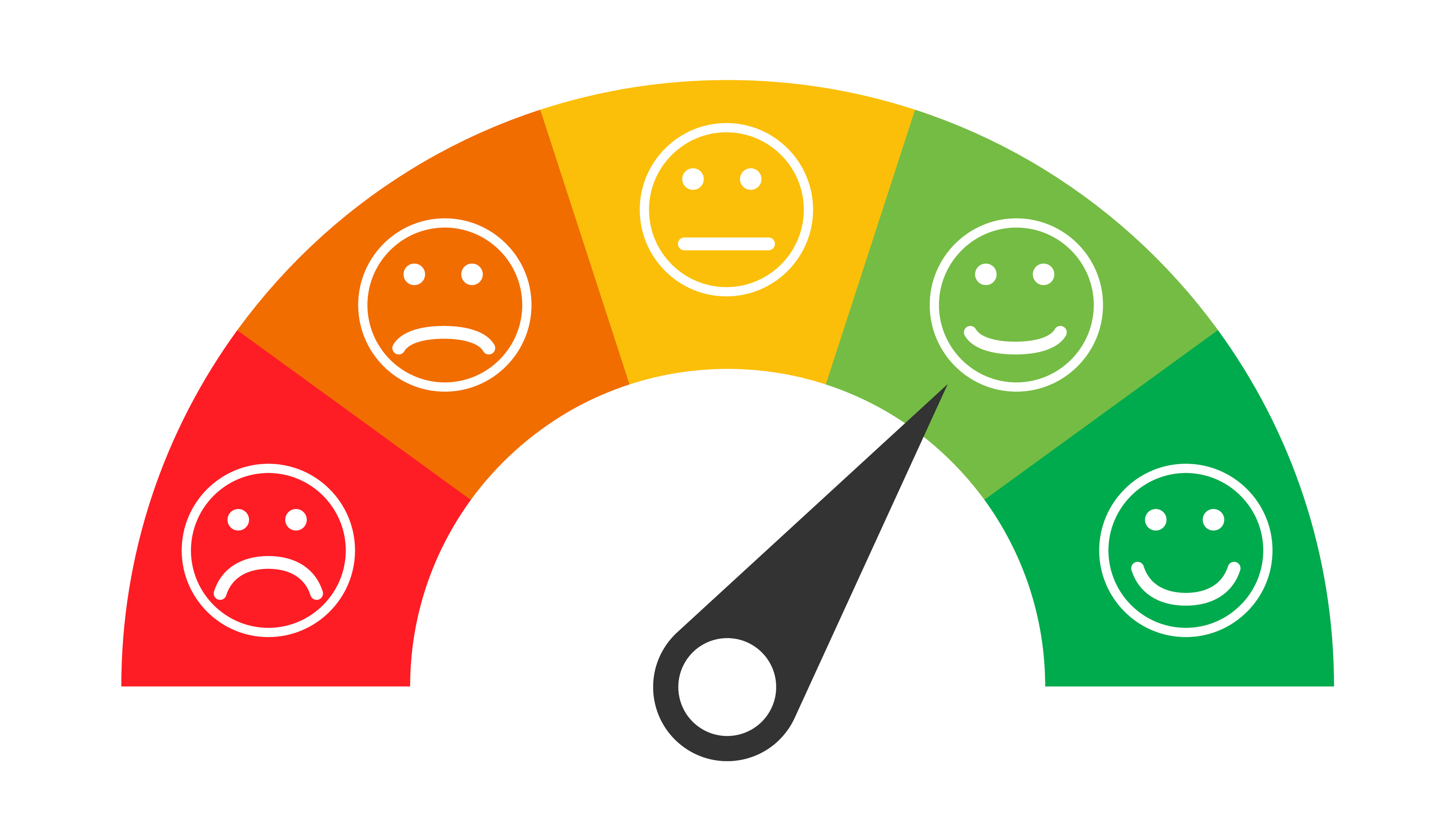The customer satisfaction score (CSAT) survey is one of today’s most commonly used types of customer satisfaction surveys.
By learning how to measure, monitor, and improve customer satisfaction scores, your team can understand how satisfied customers are with your brand, products, and services, as well as improve customer retention in ways that drive the growth of your organization.
How to Calculate and Measure Customer Satisfaction Scores
CSAT is calculated and measured by collecting customer feedback through surveys. Using the responses, organizations can extract insights to power their customer experience management strategy.
The CSAT survey asks a customer to rate their satisfaction, typically on a scale from 1 to 5. The standard question is usually, “How would you rate your overall satisfaction with our company or business?”
The scale typically corresponds to the following answers:
- Very unsatisfied
- Unsatisfied
- Neutral
- Satisfied
- Very satisfied
To calculate and measure customer satisfaction score, simply take the number of satisfied customers (those who rated you 4 or 5) and divide this by the total number of responses.
For example, if 78 of your 100 survey respondents left you a rating of 4 or 5, your score would be 78. This is often expressed using percentage as a unit: after all, the score you calculate leaves you with the overall percentage of satisfied customers at your company.
What is a Good Customer Satisfaction Score?
The CSAT score is one of the most popular customer satisfaction metrics used by organizations today. You may be wondering, “What is a good customer satisfaction score?” Or: “What customer satisfaction score benchmarks can I compare my CSAT with?”
According to HubSpot research, a good customer satisfaction score will typically fall between 75 to 85%. This means that 3 in 4 customers are satisfied with your brand, products, or services.
Of course, the answer to the question, “What is a good customer satisfaction score?” will vary by industry. For example, according to the American Customer Satisfaction Index (ACSI), the CSAT benchmark for U.S.-based full-service restaurants is 80%. For hotels, the customer satisfaction score benchmark is 71%. Hence, while a score of 75% may be considered good if you’re managing a hotel brand, the same score would not be enough to meet customer satisfaction score benchmarks for restaurants.
How to Improve Customer Satisfaction Scores: Best Practices
To improve customer satisfaction scores, you must keep the customer front and center across your entire organization. It’s crucial that you focus on attending to customer needs and solving their specific problems. Your company’s ability to attract and retain customers depends heavily on the quality of service you deliver.
Along with the commitment to customer-centricity, these best practices can also help you achieve high response rates and improved CSAT scores whenever you conduct the survey.
Follow Up to Get Consistent Feedback
Many companies struggle with ways to consistently get feedback from customers. The key is to follow up. When you ask them how satisfied they are (along with other questions), think of the process as an ongoing dialogue with your customers.
In today’s age, companies that regularly communicate with and request feedback from customers have the edge over those who make only one-off “asks.”
Monitor CSAT Over Time
Surveying customers and calculating your CSAT score is not a one-time thing. It’s important to keep track of your customer satisfaction score over time for a high-level gauge on whether you’re making progress. Dips in the trend line may imply high-impact issues affecting the customer experience.
By setting up a CSAT program, you can systematically capture and collect valuable customer feedback. The data you get can be used across your organization for continuous business improvement.
Thank Customers for Their Feedback
Be sure to write a “thank you” response to customers who respond to your customer satisfaction score survey, regardless of whether they rated your company 1 or 5. After all, they took time out of their day to answer your questions.
A personalized response also demonstrates your company’s appreciation for customer feedback. This goes a long way in minimizing churn and strengthening customer relationships.
Close the Loop
If you’re using customer experience analytics tools to send questions to and get feedback from customers, there may be a temptation to let the machine do all the work.
Remember to keep engaging with customers who have shared their satisfaction levels and candid feedback. Make sure you actually read their comments, respond to reviews, note their survey responses, and resolve issues. Technological capability is great, but it won’t close the loop on your behalf.
Act on Insights
Don’t make data collection or customer satisfaction score calculation your end goal. More data and more survey responses do not equate to smarter business decisions.
Instead, focus on how you can gather actionable insights from your customer satisfaction score surveys, as well as how you can address specific challenges. Natural language processing and other analytical techniques should help you uncover important information from customer responses and feedback.

